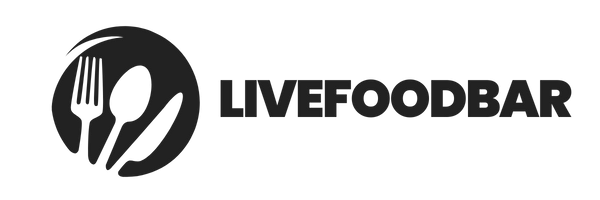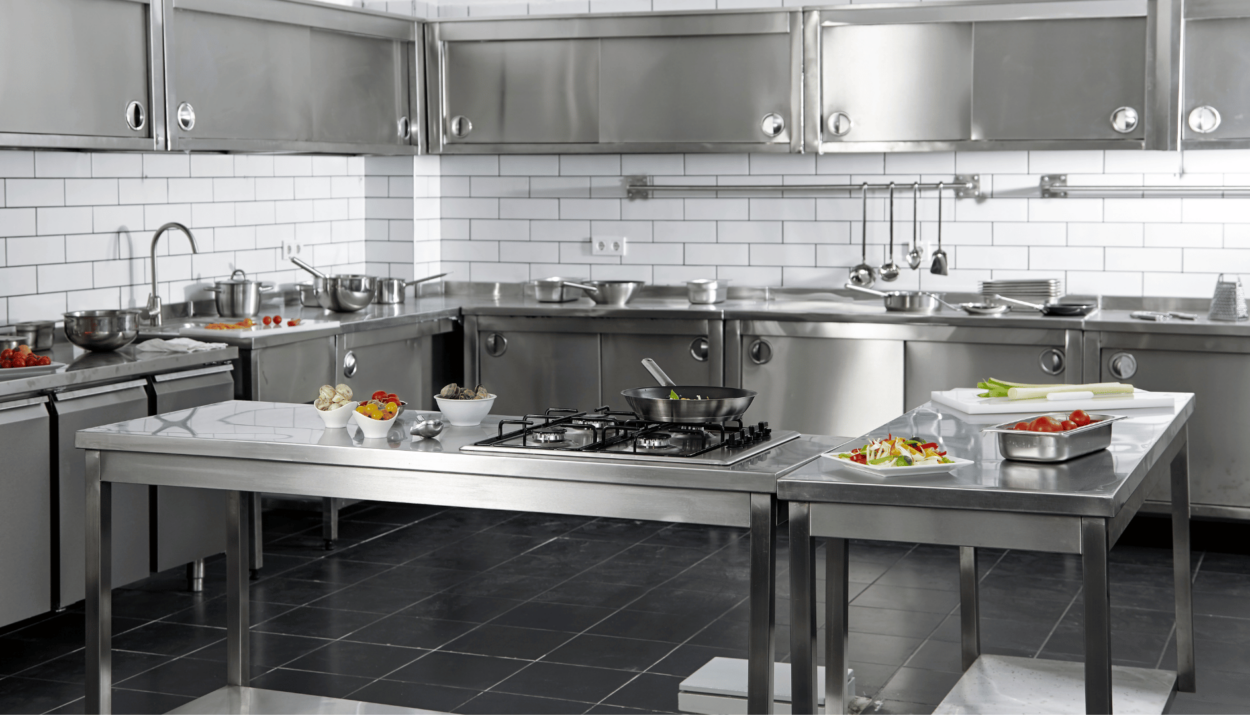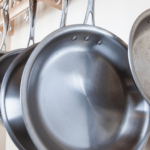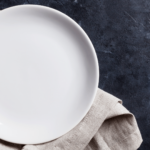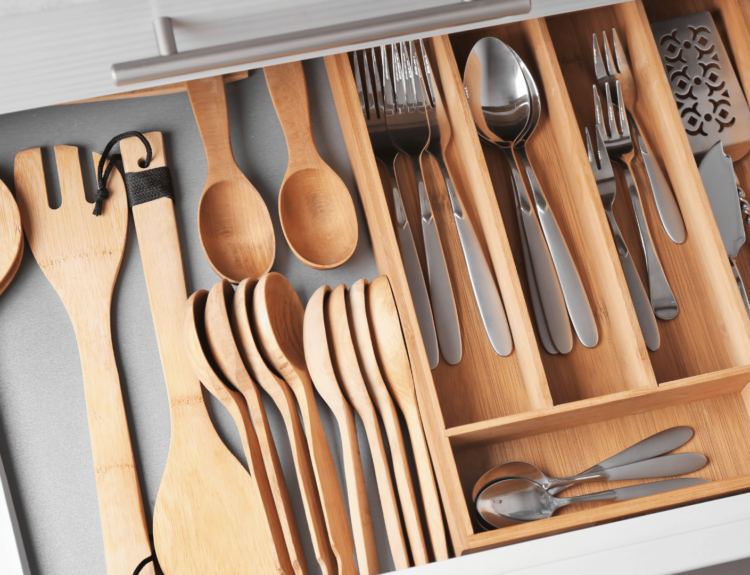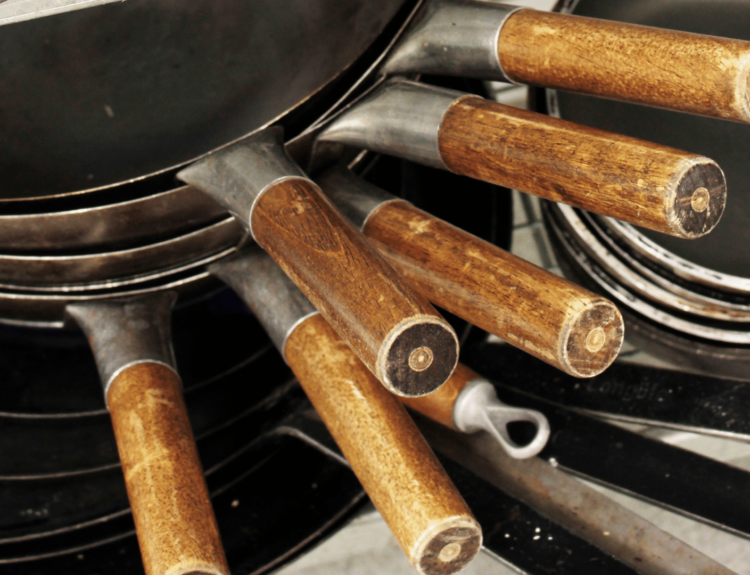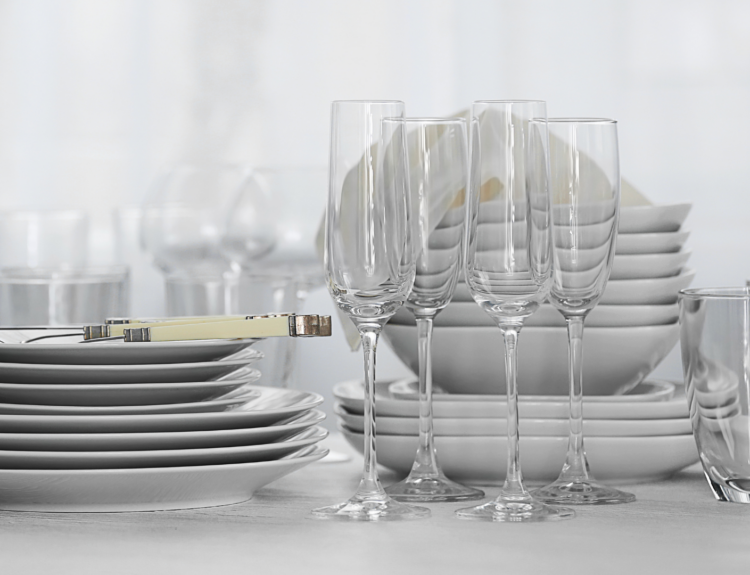In the fast-paced and demanding world of professional kitchens, having the right cookware can make all the difference. Professional chefs rely on their arsenal of high-quality pots, pans, and utensils to create delicious meals, day in and day out. From stainless steel to cast iron, each type of cookware has its own unique advantages and uses. In this blog, we will delve into the world of professional cookware, exploring the different options available and uncovering why certain materials and styles are preferred in restaurant kitchens. Whether you’re a professional chef looking to upgrade your cookware collection or a home cook aspiring to cook like the pros, this guide will provide valuable insights and recommendations.
Unveiling the World of Professional Cookware
Professional chefs understand the importance of having the right tools for the job, and cookware is no exception. In restaurant kitchens, cookware is an essential part of a chef’s arsenal, enabling them to achieve professional results and efficiently handle high-volume cooking demands. From stainless steel pots and pans to nonstick skillets and cast iron dutch ovens, professional cookware is designed to withstand the daily rigors of a busy kitchen while delivering exceptional performance. Join us as we unveil the world of professional cookware and discover the key factors that influence the choices of chefs in restaurant kitchens.
The Importance of Choosing the Right Cookware
Daily cooking in a professional kitchen involves high heat, long cooking times, and a wide variety of ingredients. Choosing the right cookware is crucial for achieving consistent and delicious results. Professional chefs understand that cookware is more than just a vessel to cook food; it directly impacts the quality, taste, and presentation of dishes. From searing and sautéing to simmering and baking, different cooking methods and techniques require specific cookware properties, such as heat conductivity, durability, and non-reactivity.
In addition, professional kitchens often use cookware that can withstand heavy use and high temperatures over long periods of time. The daily demands of commercial cooking require cookware that can hold up to intense heat and continuous use, without warping or deteriorating.
The right cookware also plays a crucial role in maintaining the integrity of ingredients. Certain foods, especially acidic ones, can react with certain materials, affecting the taste and quality of the dish. Choosing cookware that is non-reactive and does not leach any unwanted flavors or chemicals into the food ensures that the original flavors and nutrients are preserved.
Furthermore, cookware that is built to withstand high temperatures and distribute heat evenly allows for precise cooking control and prevents hot spots. This ensures that each dish is cooked to perfection, whether it’s a delicate sauce, a seared protein, or a slow-cooked stew. By selecting cookware that meets these requirements, professional chefs can elevate their cooking and deliver consistent, high-quality results to their customers.
Factors Influencing the Choice of Cookware in Professional Kitchens
The choice of cookware in professional kitchens is influenced by various factors, including the types of foods prepared, cooking techniques, and unique chef preferences. One of the key considerations is the use of acidic foods, such as tomatoes and citrus fruits, which can react with certain materials like aluminum. To avoid any unwanted flavors or discoloration, chefs often opt for cookware made from stainless steel or enameled cast iron, which are non-reactive and resistant to staining.
Another factor to consider is the use of nonstick coating. While nonstick pans are often associated with home cooks, professional chefs also use nonstick pans in their kitchens. Nonstick cookware allows for easy food release, making it ideal for delicate foods, like omelets and pancakes, that can easily stick to the pan. Additionally, nonstick pans require less oil, resulting in healthier cooking options.
Lastly, high temperatures are a common occurrence in professional kitchens, and cookware must be able to withstand the heat. Stainless steel and cast iron are popular choices due to their durability and ability to maintain their shape and performance even at high temperatures. These materials also distribute heat evenly, ensuring consistent cooking results and preventing hot spots.
By considering these factors, professional chefs can select cookware that best suits their cooking needs and delivers the desired results. The cookware becomes an extension of the chef’s skills, enabling them to create culinary masterpieces with precision and finesse.
Stainless Steel – The Preferred Choice
When it comes to professional cookware, stainless steel is the go-to choice for many chefs and restaurant kitchens. Highly durable and resistant to rust and corrosion, stainless steel pans and pots can withstand the daily rigors of a professional kitchen and last for years. With its sleek and professional appearance, stainless steel cookware is not only functional but also adds an aesthetic touch to any kitchen.
Understanding the Popularity of Stainless Steel Pans in Restaurants
Stainless steel pans are a staple in restaurants for several reasons. One of the main advantages is their ability to create flavorful pan sauces. The stainless steel surface allows for excellent heat distribution, which promotes the brown bits, or fond, to form on the bottom of the pan when searing meat or fish. These brown bits can be deglazed and transformed into rich and complex sauces, enhancing the overall flavor of the dish.
Chefs prefer stainless steel cookware because of its durability and longevity. The heavy-duty construction of stainless steel pans ensures that they can withstand high temperatures and frequent use without warping or degrading. This makes stainless steel pans a reliable and long-lasting investment for professional kitchens, where cookware is expected to endure heavy use and constant heat.
In addition, stainless steel pans are non-reactive, meaning they do not leach any unwanted flavors or chemicals into the food. This ensures that the true flavors of the ingredients shine through without any interference. The non-reactive nature of stainless steel also makes it easy to clean, as there are no stubborn or lingering flavors left behind after cooking.
Overall, stainless steel pans are the preferred choice of chefs in professional kitchens due to their durability, heat retention, and ability to create flavorful pan sauces. They are an essential tool in creating delicious, high-quality dishes that leave a lasting impression on diners.
The Versatility of Stainless Steel Saucepans and Skillets
Stainless steel saucepans and skillets are the chef’s arsenal, boasting a multi-functional and adaptable nature that accommodates diverse cooking applications. Professional chefs favor stainless steel cookware for its unrivaled heat retention and distribution capabilities. From pan sauces to high-heat searing, stainless steel pans and pots play a pivotal role in achieving precise and consistent cooking results in restaurant kitchens.
The layers of stainless steel in these cookware pieces make them a great alternative to nonstick pans, especially when handling acidic foods at high temperatures. Moreover, their durability and resistance to wear and tear make them a great option for daily cooking in high-volume commercial settings.
The Role of Nonstick Pans
While stainless steel pans reign supreme in professional kitchens, nonstick pans serve a unique role and have their place alongside their stainless steel counterparts. Nonstick pans, as the name suggests, have a coating that prevents food from sticking to the surface, making them ideal for delicate foods and low-fat cooking options. But do professional chefs use nonstick pans? The answer is yes, and they have their reasons for doing so.
The Convenience of Small and Medium Nonstick Pans
Small and medium-sized nonstick pans are commonly used by professional chefs for specific cooking tasks and recipes. Their nonstick surface allows for easy flipping and release of foods, making them perfect for omelets, pancakes, and other foods that require delicate handling. The nonstick coating also reduces the need for excessive oil and butter, promoting healthier cooking options.
These smaller nonstick pans excel at quick and precise cooking, allowing chefs to cook individual portions or dishes with ease. They heat up quickly and evenly, which is essential for achieving even cooking and preventing hot spots. Whether it’s frying an egg or sautéing a handful of vegetables, small and medium nonstick pans offer convenience and efficiency in professional kitchens, where time and precision are of utmost importance.
High-sided Nonstick Skillets in Commercial Kitchens
High-sided nonstick skillets play a vital role in commercial kitchens, offering professional benefits for restaurant cooking. Their high sides are essential for containing sauces and gravies, while also managing larger cooking quantities efficiently. These skillets are ideal for searing and frying, contributing to both cooking speed and the presentation of dishes. The significance of high-sided nonstick skillets lies in their ability to handle high temperatures and distribute heat evenly, making them a great alternative for professional chefs.
Additionally, their nonstick coating allows for easy cleaning, further enhancing cooking efficiency. In restaurant kitchens, where daily cooking demands are high, these skillets are a valuable addition to any chef’s arsenal, proving their worth in managing diverse culinary requirements and ensuring top-quality dish presentation.
Cast Iron & Enameled Cast Iron – The Heavy Duty Heroes
When it comes to heavy-duty cookware, cast iron and enameled cast iron take center stage. These durable materials are known for their exceptional heat retention and versatility, making them ideal for professional kitchens.
The Undeniable Utility of Dutch Ovens
In professional kitchens, Dutch ovens are indispensable. Their versatility allows for searing, frying, and baking, catering to diverse cooking needs. These ovens excel in distributing heat evenly, ensuring consistent results during prolonged cooking times. Their durability makes them suitable for both stovetop and oven use, enduring high temperatures and daily cooking demands. The heavy lid aids in moisture retention and flavor infusion, ideal for preparing hearty stews and braises. Dutch ovens are a chef’s arsenal, especially for slow-cooking, enhancing flavors and textures. With their ability to withstand high heat, Dutch ovens have become a staple in restaurant kitchens, meeting the rigorous demands of professional chefs.
Cast Iron Skillets and Grill Pans – The Unsung Heroes of Kitchens
Cast iron skillets and grill pans are essential in professional kitchens for their ability to withstand high heat, making them perfect for searing and grilling. They develop a nonstick patina over time, ideal for cooking delicate foods like scallops and pancakes. Versatile and durable, these pans excel on stovetops and flat tops, while their high sides are well-suited for creating pan sauces and gravies. Additionally, they offer the convenience of being dishwasher safe and serve as an excellent alternative to nonstick skillets. With their exceptional performance and reliability, cast iron skillets and grill pans truly stand out as the unsung heroes of kitchens, catering to the diverse needs of professional chefs and culinary enthusiasts alike.
Exploring Other Essential Cookware Pieces
While stainless steel, nonstick, and cast iron cookware play major roles in professional kitchens, there are other essential cookware pieces that deserve recognition. Let’s take a closer look at some of these versatile tools.
The Significance of Sauté Pans and Woks
When it comes to professional kitchens, the significance of sauté pans and woks cannot be overstated. Sauté pans with their high sides and exceptional heat retention are ideal for tasks like searing and creating pan sauces. Similarly, woks stand out for their versatility, making them essential for cooking a wide variety of dishes. These pans and woks offer excellent heat distribution and control, meeting the demanding requirements of professional chefs. Moreover, their dishwasher-safe nature adds convenience to the mix, allowing for easy and efficient cleaning. Whether it’s stir-fries or omelets, the utility of sauté pans and woks in restaurant kitchens is unmatched, making them indispensable tools in the chef’s arsenal.
The Role of Griddles in Professional Kitchens
Griddles play a crucial role in professional kitchens, offering a flat cooking surface ideal for preparing a range of dishes such as pancakes and bacon. Their versatility extends to cooking various foods, from oatmeal to scallops, making them an indispensable tool for chefs. Known for their durability and ability to withstand high temperatures, griddles are perfect for achieving the desired sear on meats and seafood. Additionally, their ease of use and maintenance make them an excellent choice for meeting the daily cooking demands of restaurant kitchens. As a staple in professional kitchens, griddles provide unparalleled cooking flexibility, catering to the diverse culinary needs of chefs and ensuring efficient food preparation.
Diving Deeper into the World of Professional Cookware
To truly understand the world of professional cookware, we need to delve into some lesser-known but equally valuable options. Let’s explore carbon steel pans, cookware made with layers of stainless steel, and the use of metal utensils in professional kitchens.
Why are Certain Cookware Materials More Prevalent in Professional Kitchens?
Certain cookware materials are more prevalent in professional kitchens due to their specific qualities. Stainless steel cookware offers durability and is great for creating pan sauces and gravies. Cookware with layers of stainless steel provides even heat distribution. Copper cookware is preferred for its excellent heat conductivity and responsiveness, ideal for sauces and precise cooking. These materials are suitable for high-heat cooking and long, slow cooking times. Nonstick coating adds versatility to professional cookware.
Frequently Asked Questions
What are some common materials used for professional cookware?
Stainless steel, copper, aluminum, and cast iron are commonly used materials for professional cookware. Stainless steel offers durability and versatility, while copper provides excellent heat conductivity. Aluminum is lightweight and cost-effective, making it popular for high-volume cooking. Cast iron is known for its durability and heat retention, perfect for slow-cooking dishes.
How does the material of a pot or pan affect its cooking ability?
The cooking ability of a pot or pan is influenced by its material. Copper pots and pans heat up quickly and evenly, making them ideal for delicate foods. Stainless steel is durable and easy to clean, but may not distribute heat as evenly. Cast iron retains heat well and creates a great sear, but requires seasoning and maintenance.
How does the quality of cookware affect cooking results?
High-quality cookware plays a crucial role in achieving optimal cooking results. It ensures even heat distribution, preventing food from burning due to hot spots. Durable materials like stainless steel or cast iron withstand frequent use in professional kitchens. Non-stick coatings make cooking and cleaning easier but may not be suitable for high-heat cooking. Investing in quality cookware enhances the taste and presentation of dishes served.
Conclusion
Selecting the correct cookware (for you and your unique situation) is crucial for professional kitchens. It not only affects the cooking results but also impacts the efficiency and productivity of the kitchen. Stainless steel pans are the preferred choice due to their durability and versatility. They are widely used in restaurants for their ability to distribute heat evenly and provide excellent cooking performance.
Nonstick pans, especially small and medium-sized ones, offer convenience and ease of use in busy commercial kitchens. Cast iron and enameled cast iron cookware, such as Dutch ovens and skillets, are known for their heavy-duty nature and exceptional heat retention. Other essential cookware pieces like sauté pans, woks, and griddles play vital roles in professional kitchens as well.
Understanding the various materials used in professional cookware and their impact on cooking ability is essential for chefs and kitchen staff. Investing in high-quality cookware ensures consistent and outstanding cooking results. So, make wise choices when it comes to your cookware selection to elevate your culinary experience in professional kitchens.
